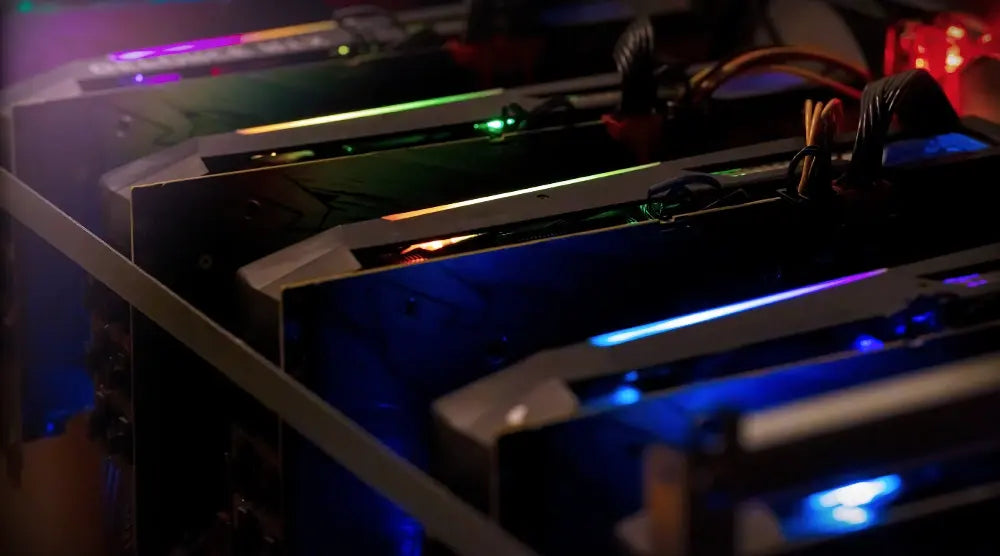Every computing revolution has always centered on random access memory (RAM). From the early DDR1 to modern DDR5, every generation has seen tremendous increases in speed, bandwidth, and efficiency. The industry is poised for another significant upheaval, DDR6 RAM, the memory standard destined to define the following ten years of computing.
Anticipation is great as the JEDEC group is expected to conclude DDR6 specs by Q2 2025, and commercial availability is scheduled for late 2025 to early 2026. This development might be as revolutionary as the shift from DDR3 to DDR4, according to industry analysts. Let's discuss what makes DDR6 RAM the future of PC memory.
What Is DDR6 RAM?
DDR6 RAM is the sixth-generation Double Data Rate memory, built to replace DDR5 as the industry standard for computers, laptops, and workstations.
Thus far, here's what we know:
- DDR6 will begin at almost twice the entry speeds of DDR5, 8,800 MT/s. Premium modules could attain 17,600 MT/s.
- JEDEC-compliant DDR6 modules will have a bandwidth of at least 134.4 GB/s; overclocked versions will be significantly above that.
- 4×24-bit sub-channel architecture divides memory into smaller, independent channels to maximize data transfer efficiency.
Adoption of CAMM2 Form Factor
Especially for laptops and compact devices, a new standard has been developed to increase signal integrity and bandwidth efficiency. It is not only quicker, but also more flexible and scalable.
Performance Advantages of DDR6 RAM
The performance advantages of next-gen RAM go further than only simple velocity. Such as:
- Massive Bandwidth Improvements: DDR6 starts at 134.4 GB/s, with tuned modules expected to push beyond 150+ GB/s.
- Faster Response Times: A more efficient sub-channel architecture delivers quicker access to data and smoother overall performance.
- Enhanced Multitasking: DDR6 allows simultaneous execution of multiple heavy-duty processes without slowdowns.
- Workload Readiness: From professional applications to gaming and AI, DDR6 ensures systems keep pace with rising demands.
- Eliminating Bottlenecks: By removing memory-related slowdowns, DDR6 enables CPUs and GPUs to perform at their full potential across all sectors.
DDR6 RAM for Gamers
Gamers are probably going to experience some of the quickest advantages. Here is how DDR6 RAM will enhance gaming:
- Faster RAM enables quicker asset loading, hence more consistent FPS.
- Game loading of textures, maps, and levels will be faster.
- Less stuttering during open-world exploration or intense multiplayer matches results in smoother gameplay.
- DDR6 will enable balanced system performance by complementing next-gen GPUs and CPUs.
DDR6 RAM for Professionals
Professionals in demanding fields will also benefit greatly from the enhanced performance that DDR6 RAM delivers.
- Faster memory speeds enable quicker previews, smoother scrubbing, and shorter render times in video editing and 3D rendering.
- Training sophisticated models necessitates enormous bandwidth, and DDR6 will manage it better than ever.
- From simulations to large data analytics, DDR6 will hasten processes by lowering wait times.
- DDR6 is an investment in competitiveness and productivity for businesses; it's not just a luxury.
Future Outlook
The deployment of DDR6 marks the start of what comes next rather than the end.
- Beyond DDR6: Industry analysts predict DDR7 by the early 2030s, therefore increasing speeds.
- Integration with CPUs/GPUs: DDR6 is designed to enable closer memory integration with processors and graphics cards, significantly reducing latency.
- Impact on System Design: As DDR6’s CAMM2 form factor becomes more widespread, expect slimmer laptops, more energy-efficient desktops, and even smaller gaming systems.
Fundamentally, DDR6 will shape how PCs and workstations are designed for decades to come, influencing not just performance but overall system architecture.
Final Thoughts
DDR6 RAM isn’t just another upgrade; it’s a transformative leap that will redefine how we experience computing, from next-level gaming to AI-driven workloads. With unmatched speed, efficiency, and scalability, DDR6 is set to become the backbone of future PCs, laptops, and workstations. As the industry prepares for its rollout, now is the time to stay ahead of the curve.
For more expert guides, in-depth hardware insights, and future-proofing tips, visit the Technoid Inc. Blog, your ultimate resource for keeping any setup at peak performance.
FAQs
1. When will DDR6 RAM be available?
DDR6 RAM is expected to be finalized by JEDEC in Q2 2025, and modules are expected to be commercially available by late 2025 or early 2026.
2. How fast is DDR6 compared to DDR5?
While DDR5 starts at about 4,800 MT/s, DDR6 will start at 8,800 MT/s and go all the way up to 17,600 MT/s-nearly double DDR5 speeds.
3. Will DDR6 RAM work on DDR5 motherboards?
No. Just like its predecessors, DDR6 will require a new set of motherboards and chipsets that will support the RAM architecture.
4. In this context, who benefits from DDR6 RAM?
Gamers and professionals will both benefit from DDR6 RAM. Gamers will enjoy higher frame rates and smoother performance, while professionals will benefit from faster rendering, AI training, and data processing.

 United States
United States

